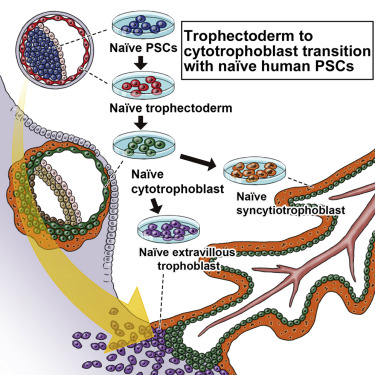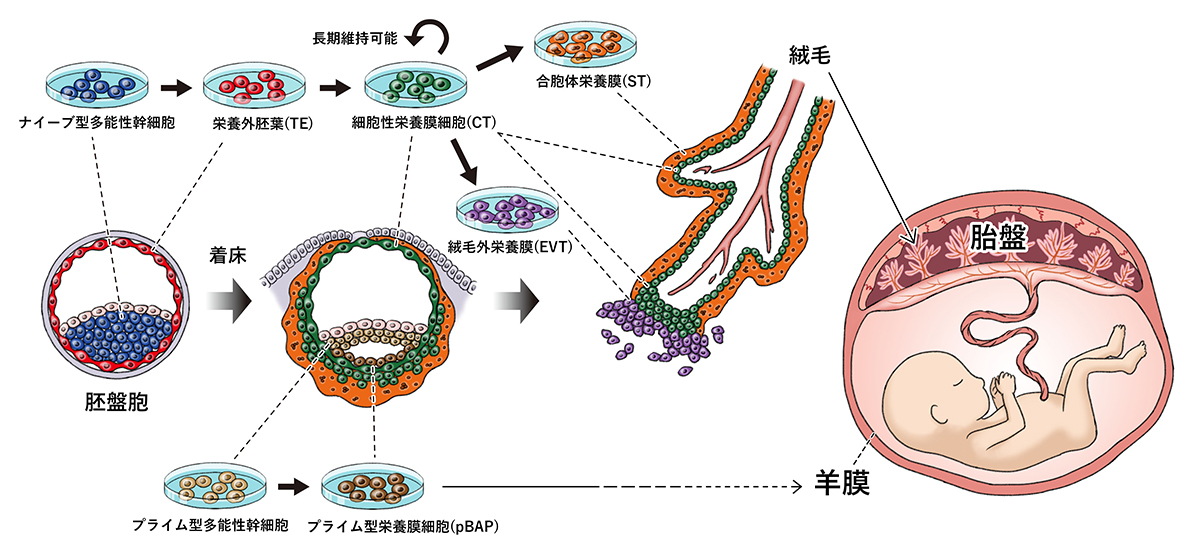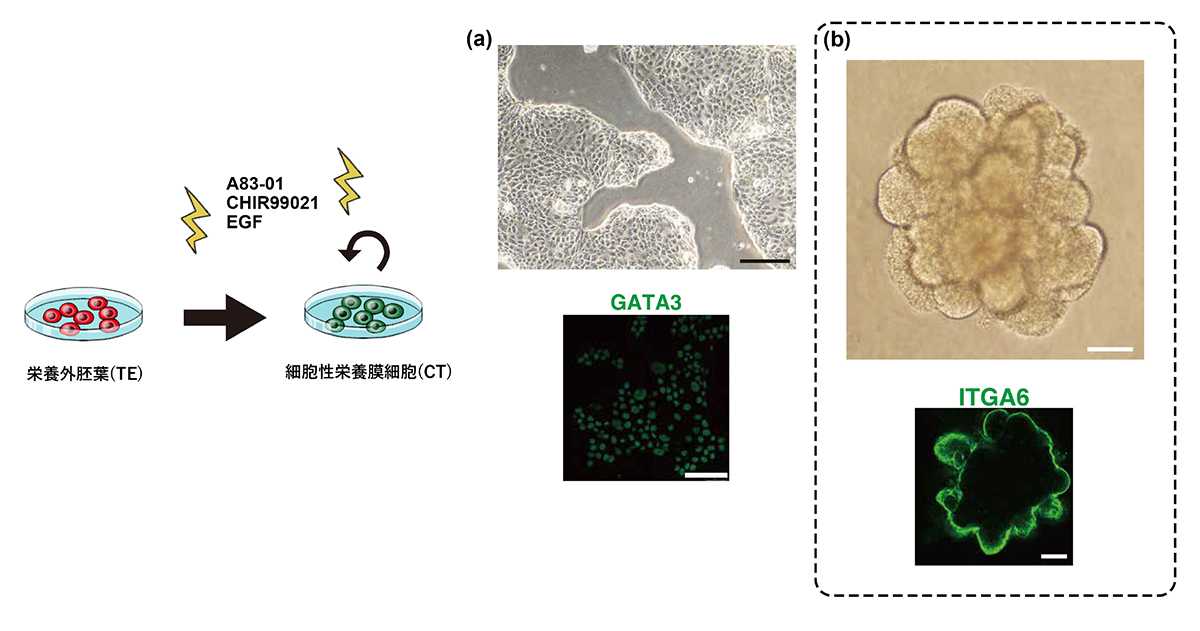


京都大学:从iPS制备胎盘细胞:人类幼稚iPS细胞
-阐明妊娠并发症的期望-
京都大学高岛康宏讲师:
胎盘细胞是在实验容器中由人诱导的多能干细胞(iPS细胞)产生的。
京都大学讲师高岛康宏(Yasuhiro Takashima)于4月7日在美国科学杂志《细胞干细胞》的电子版中宣布。
实验室血管中胎盘细胞的形成:
胎盘为子宫中的胎儿提供氧气和营养。
如果胎盘细胞形成异常
不孕和胎儿发育不良,
孕妇高血压等
帮助弄清妊娠并发症。
高岛说:“它将成为胎盘细胞形成过程的模型,并将有助于弄清其原因。”
iPS电池(未使用的类型)的使用:
演讲者Takashima等人使用“改良的iPS细胞(幼稚型),使其更接近受精卵”。
它不是由京都大学山中伸弥(Shinya Yamanaka)教授最初开发的iPS细胞(原始类型)。
设计了要添加到培养液中的物质和培养基。
结果,再现了“从营养外胚层形成三种类型的胎盘细胞的过程”。
京都大学:Jiji.com
https://www.jiji.com/jc/article?k=2021040800024&g=soc
从人类幼稚的iPS细胞制备胎盘细胞
〜成功构建体外胎盘发育模型〜
观点:
我们首次成功地从人类幼稚iPS细胞中产生了营养外胚层(TE),并确认了分化为继续存在胎盘细胞的细胞群。
在技术和伦理上都困难的早期人类胚胎的研究中,可以构建一个模拟体外胎盘细胞分化过程的模型。
可以研究植入前后胎盘细胞的变化。
我们已经阐明了幼稚iPS细胞的早期分化谱系的一部分,这些细胞有望作为下一代iPS细胞。
CiRA |京都大学iPS细胞研究与应用中心
https://www.cira.kyoto-u.ac.jp/j/pressrelease/news/210408-000001.html
Stem cells reproduce the beginnings of the placenta
The Yasuhiro Takashima lab shows that naïve iPS cells can be induced to form all the stages that mimic early placenta development in humans.
Gynecologist Shingo Io knows that
during birth there will not only be a baby leaving the mother’s body.
Joining the cries that bring joy to the room will be a silent entity, the placenta.
Like the baby, this tissue only began to grow upon conception, but little is known about how the placenta develops inside the mother.
A new study by Io, CiRA Junior Associate Professor Yasuhiro Takashima and colleagues reports how iPS cells can be used to study this development.
The study is the first to show that
iPS cells have this potential and will be invaluable for understanding the many factors that lead to miscarriage.
No matter how old or how big, all of us began as a fertilized egg, which is nothing more than a single cell.
This one cell will grow into an embryo, which eventually leads to a fully formed human body.
That one cell also grows into extra-embryonic tissue that becomes the placenta.
While not part of the baby’s body, the placenta is essential for healthy growth.
Historically tossed aside like a bloody towel, it is now studied intensively.
CiRA | Center for iPS Cell Research and Application, Kyoto University
https://www.cira.kyoto-u.ac.jp/e/pressrelease/news/210408-000001.html
Capturing human trophoblast development with naive pluripotent stem cells in vitro
Highlights
• Trophectoderm can be generated from naive human pluripotent stem cells
• Human trophoblast stem cells represent post-implantation cytotrophoblast
• Trajectory of trophoblast from pre- to post-implantation is drawn by our model
• ACE is essential for specification and maintenance of cytotrophoblast stem cells
ScienceDirect
https://www.sciencedirect.com/science/article/abs/pii/S1934590921001193